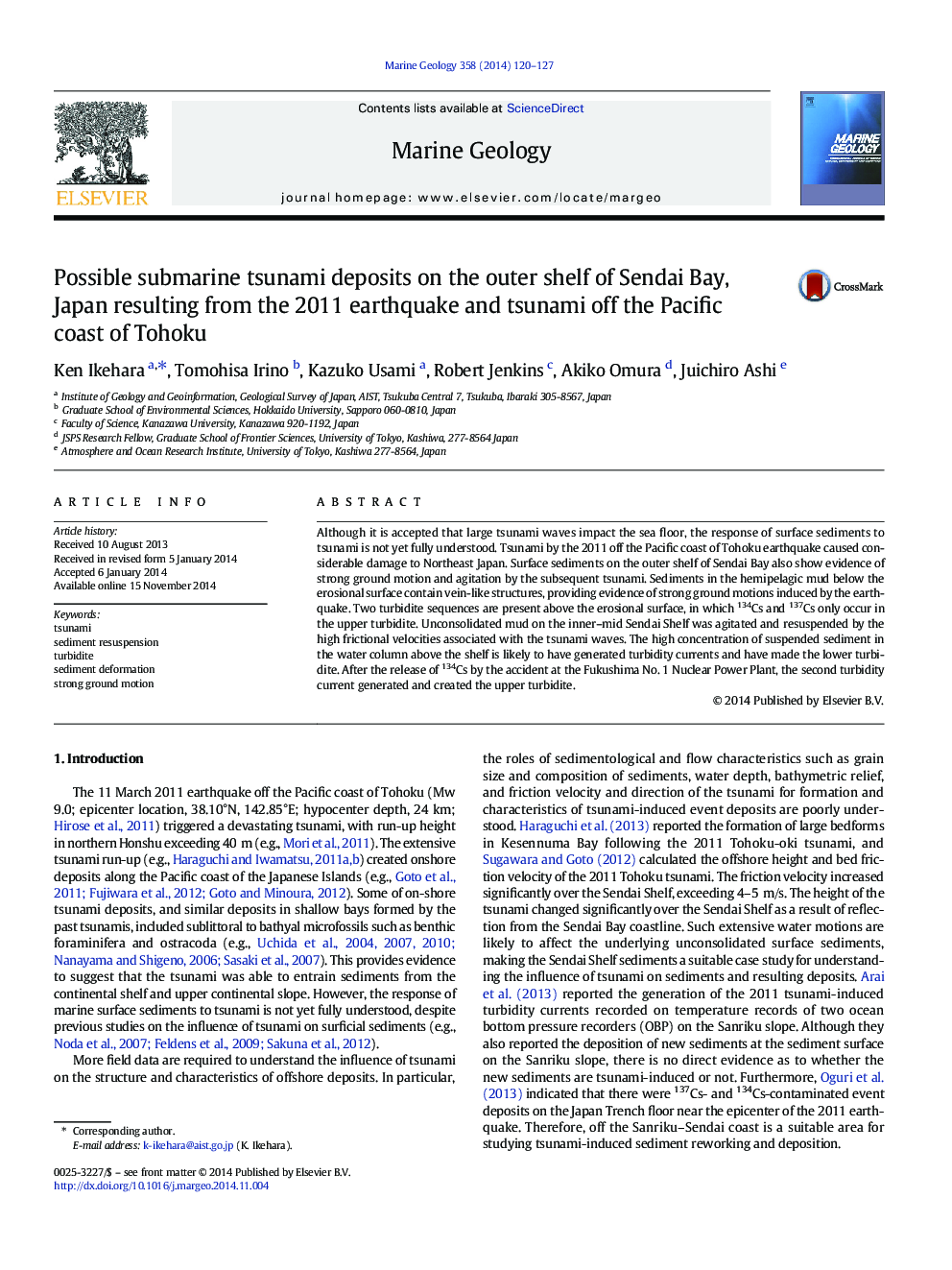| Article ID | Journal | Published Year | Pages | File Type |
|---|---|---|---|---|
| 4718242 | Marine Geology | 2014 | 8 Pages |
•We report the offshore submarine tsunami-related deposits by the 2011 Tohoku tsunami.•Sediment resuspension by the tsunami played an important role on turbidity current generation.•Repeated generation of turbidity currents made two turbidite sequences on the outer shelf of Sendai Bay, Japan.
Although it is accepted that large tsunami waves impact the sea floor, the response of surface sediments to tsunami is not yet fully understood. Tsunami by the 2011 off the Pacific coast of Tohoku earthquake caused considerable damage to Northeast Japan. Surface sediments on the outer shelf of Sendai Bay also show evidence of strong ground motion and agitation by the subsequent tsunami. Sediments in the hemipelagic mud below the erosional surface contain vein-like structures, providing evidence of strong ground motions induced by the earthquake. Two turbidite sequences are present above the erosional surface, in which 134Cs and 137Cs only occur in the upper turbidite. Unconsolidated mud on the inner–mid Sendai Shelf was agitated and resuspended by the high frictional velocities associated with the tsunami waves. The high concentration of suspended sediment in the water column above the shelf is likely to have generated turbidity currents and have made the lower turbidite. After the release of 134Cs by the accident at the Fukushima No. 1 Nuclear Power Plant, the second turbidity current generated and created the upper turbidite.
